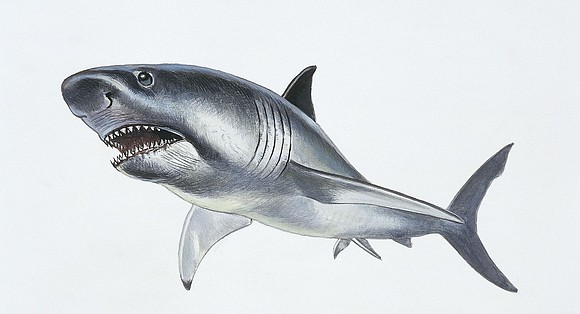Megalodons skinnier than previously thought, new study suggests
CNN/Stylemagazine.com Newswire | 1/22/2024, 8:38 a.m.

Originally Published: 21 JAN 24 19:00 ET
By Jack Guy, CNN
(CNN) — Megalodons, the huge prehistoric sharks depicted in movies such as “The Meg,” had more slender bodies than was previously thought, according to a new study.
Many mysteries remain about the biology of megalodons, but until now, great white sharks had been used to model their appearance. But new research from a team led by Kenshu Shimada, a paleobiologist at DePaul University in Chicago, and Phillip Sternes, a doctoral candidate at the University of California at Riverside, suggests megalodons would have had skinnier bodies than great whites.
The Otodus megalodon lived more than 23 million years ago. Fossils of the extinct giant are hard to come by. While there are plenty of fossilized shark teeth, their bodies mainly consist of cartilage rather than bones, and are rarely preserved.
This new research is based on the reappraisal of an incomplete set of fossil vertebrae found in Belgium.
While previous research estimated that this particular megalodon would have measured 9.2 meters (30.2 feet) in length, Shimada and his coauthors say the individual would have in fact measured at least 11.1 meters (36.4 feet).
Shimada told CNN that the fossil vertebrae would not have been strong enough to support a shark of this length if it had the same body shape as a great white.
“If the body form of the great white shark is directly applied to the vertebral column, the diameter of the vertebrae would then be unrealistically small for the shark to be able to support its body,” he said.
Shimada explained that a vertebral column of this diameter would not provide sufficient support for the muscles of a body shape like that of a great white, and would also increase the risk of spinal cord injuries.
“This is particularly important considering that shark skeletons are not as strong as bones because they are cartilaginous (made of cartilage),” he added.
He did note, however, that some shark species, including megalodon, exhibit some strengthening of this cartilage through calcification, or a build-up of calcium that can then harden.
“The new study considers the size proportion between the vertebrae and body in a more biologically realistic manner, which would indicate a leaner body at least compared to the modern great white shark,” he said.
The research suggests that “the modern great white shark may not necessarily serve as a good modern analog for assessing at least certain aspects” of megalodon biology, said Shimada.
“There are still many misconceptions or unanswered questions about the biology of megalodon, and we would like to continue to scientifically correct or elucidate them based on the fossil record,” he said.
As things stand, there is only a partial fossil record for the megalodon, and Shimada hopes a complete skeleton will be discovered someday.
The study was published Sunday in the journal Palaeontologia Electronica.
Previous research published in August 2022 estimated the megalodon would have been able to devour prey the size of orca whales – which can be up to 26 feet long and weigh more than 8,000 pounds – in just five bites.
The megalodon went extinct around 3.6 million years ago, according to the United Kingdom’s Natural History Museum, for reasons scientists are still trying to understand.
One theory is that their demise was linked to the fact that they were warm-blooded.
Previous research by Shimada and others concluded that being warm-blooded may have been one of the key drivers fueling megalodons’ massive size and overall prowess as predators, but it also made them sensitive to environmental changes.
“The fact that megalodon disappeared suggests the likely vulnerability of being warm-blooded because warm-bloodedness requires constant food intake to sustain high metabolism,” Shimada told CNN in July last year.
“Possibly, there was a shift in the marine ecosystem due to the climatic cooling,” causing the sea level to drop, altering the habitats of the populations of the types of food megalodon fed on such as marine mammals and leading to its extinction.
The-CNN-Wire






